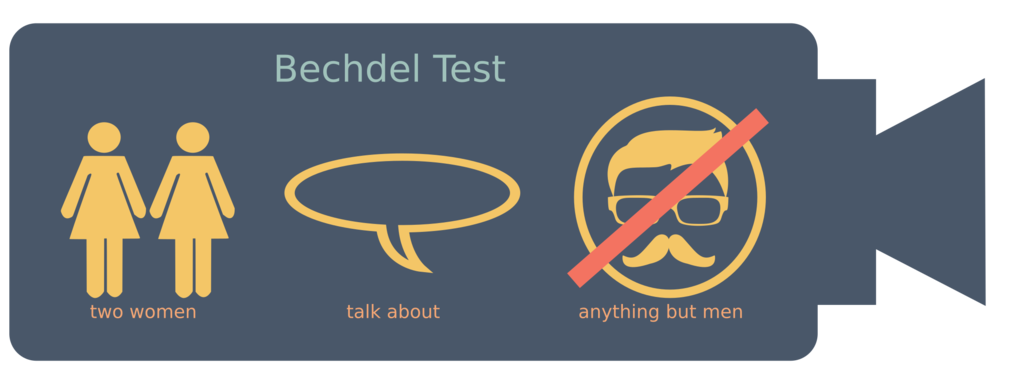This article answers Exercise 4.14 from the highly recommended Bayes Rules! book.

In Chapter 4 of the book, recall that the Bechdel test is satisfied by a movie whose conditions are as follows:
- the movie has at least two women in it,
- these two women talk to each other, and
- the two women also talk about something other than a man.
Furthermore, $\text{Figure 1}$ summarizes the three rules mentioned before.
Suppose that we review a sample of $n$ recent movies and record $Y$, the number of movies that pass the Bechdel test. Considering $Y$ as the number of “successes” in a fixed number of independence trials, $Y$ can be specified as a Binomial model with $\pi$ as its parameter. Moreover, $\pi$ can also be described as Beta distribution with prior hyperparameters $\alpha$ and $\beta$:
\[\begin{align} Y \mid \pi &\sim \text{Bin}(n,\pi) \\ \pi &\sim \text{Beta}(\alpha, \beta). \end{align}\]Thus, the posterior of Beta-Binomial model of $\pi$ is given by
\[\begin{equation} \pi \mid (Y = y) \sim \text{Beta}(\alpha + y, \beta + n - y). \tag{1}\label{eq:the-posterior} \end{equation}\]The Question:
In the Beta-Binomial setting, show that we can write the posterior mode of $\pi$ as the weighted average of the prior mode and observed sample success rate: \(\begin{equation} \text{Mode}(\pi \mid Y = y) = \frac{\alpha + \beta - 2}{\alpha + \beta + n - 2} \cdot \text{Mode}(\pi) + \frac{n}{\alpha + \beta + n - 2} \cdot \frac{y}{n} \tag{2}\label{eq:the-problem} \end{equation}\)
Answer:
Recall that mode of the prior is
and mode of the posterior is
\[\begin{equation} \text{Mode}(\pi \mid Y = y) = \frac{\alpha + y - 1}{\alpha + \beta + n -2}. \tag{4}\label{eq:mode-posterior} \end{equation}\]Next, we show that Equation \eqref{eq:mode-posterior} can be written as Equation \eqref{eq:the-problem} as follows:
\[\begin{align} \text{Mode}(\pi \mid Y = y) &= \frac{\alpha + y - 1}{\alpha + \beta + n -2} \\ &= \frac{\alpha - 1}{\alpha + \beta + n - 2} + \frac{y}{\alpha + \beta + n - 2} \\ &= \frac{\alpha - 1}{\alpha + \beta + n - 2} \cdot \frac{\alpha + \beta -2}{\alpha + \beta -2} + \frac{y}{\alpha + \beta + n - 2} \cdot \frac{n}{n} \\ &= \frac{\alpha + \beta -2}{\alpha + \beta + n - 2} \cdot \frac{\alpha - 1}{\alpha + \beta -2} + \frac{n}{\alpha + \beta + n - 2} \cdot \frac{y}{n} && \text{Rearrange the terms} \\ &= \frac{\alpha + \beta -2}{\alpha + \beta + n - 2} \cdot \text{Mode}(\pi) + \frac{n}{\alpha + \beta + n - 2} \cdot \frac{y}{n}. && \text{Utilize Equation }\eqref{eq:mode-prior} \end{align}\]At last, we have shown that Equation \eqref{eq:the-problem} is indeed true.
